Fixed issues with LDOs, current limiting for negative LDO tied to negative Vin, not GND like on positive ones. Doh.

Two 9V Lithium 6F22 accumulators hooked up on power input and output. No load connected.
Positive 8.5V LDO (they all adjustable, I call them this just for clarity, following schematics) = +7.917V output, taking 4mA idle
Negative 8.5 LDO = -7.772V output, taking 1.8mA idle
Positive 5.0V LDO = 5.006V output
Negative 5.0V LDO = -4.910V output
Voltage is set by resistors on pins, so don't worry about voltage levels, they are not important at this moment. I used random jellybean 5% resistors to match up with output voltages. Final will have proper 25ppm 1% ones. Here's are some scope shots with 8.5V voltages connected via direct 1:1 BNC cable:
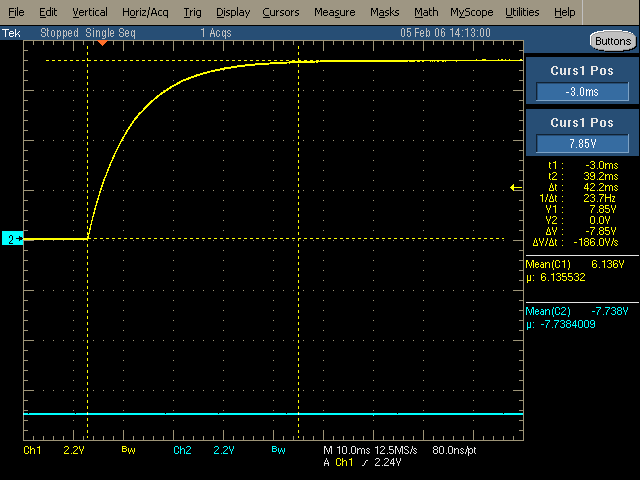
-
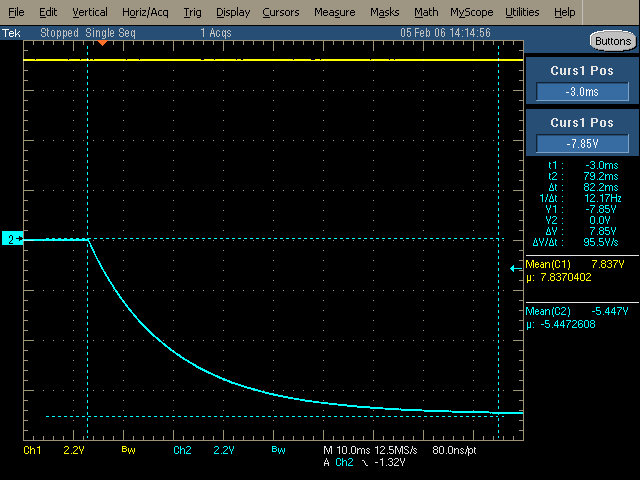
Start-up positive supply (left), negative supply (right)
Noise measurement, scope is AC coupled, minimum voltage scale (1mV/div, TDS5034B), impedance set to 50 Ohm
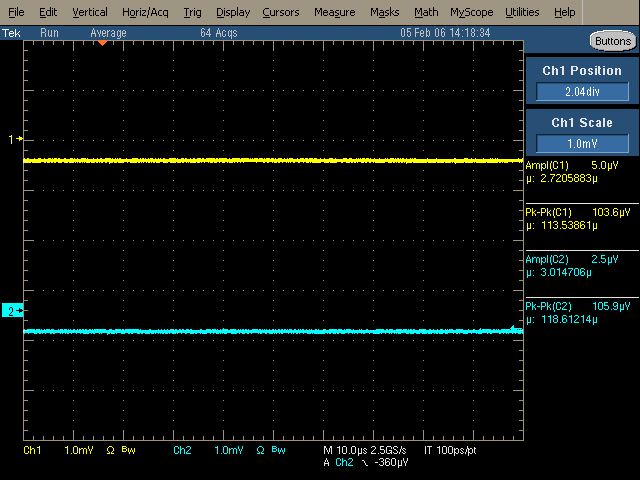
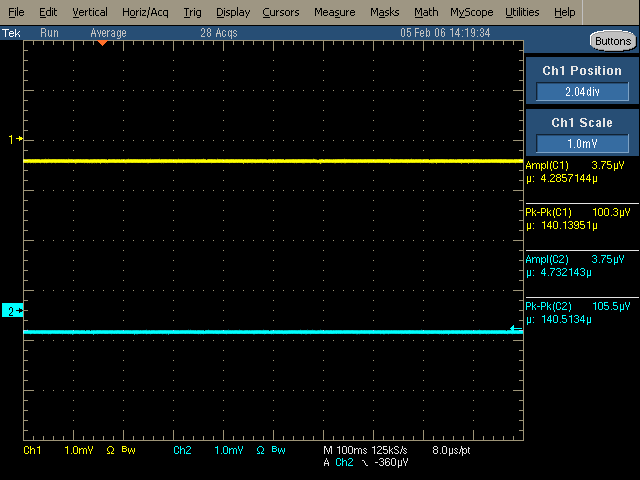
You see anything? I don't see. Scope shows exactly same with inputs grounded. No surprises, noise well below measurement levels on usual gear

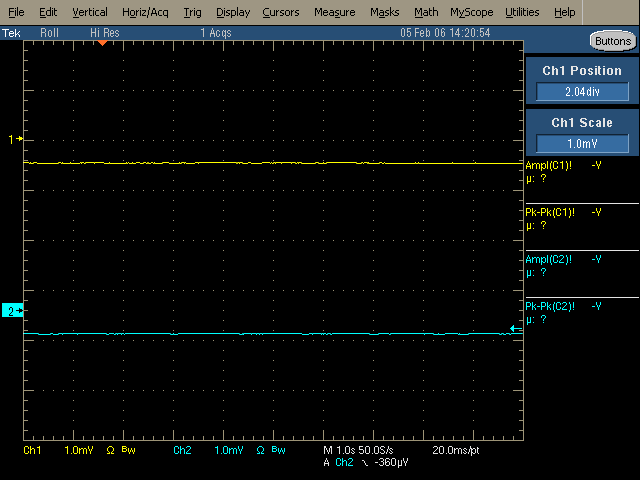
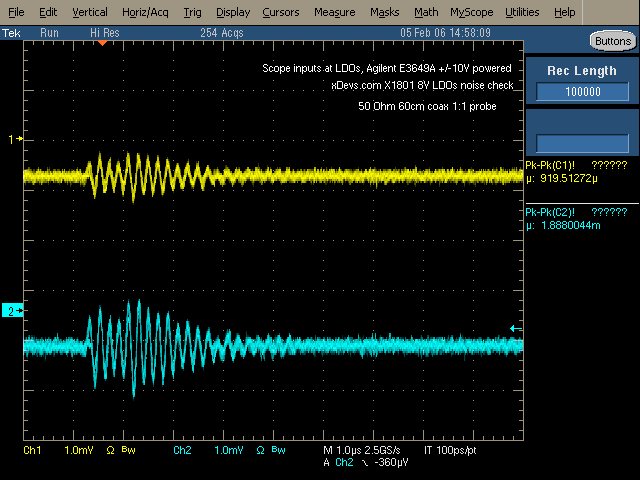
1 second scale, same story. Right capture - LDO input power is taken from Agilent E3649A ±10V. PSU causing ~1mV ripple on positive, and ~2mV on negative output. Could be wiring antennae though, did not re-check.
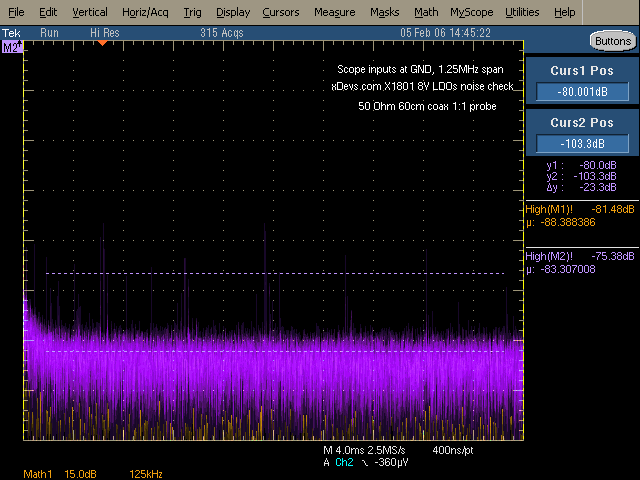
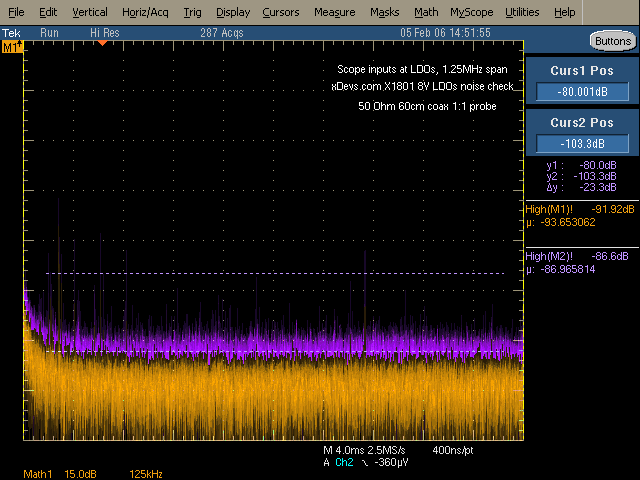
Now need get those pesky EEPROMs, order rest of parts and we can unbox preamp module and try some real stuff.
